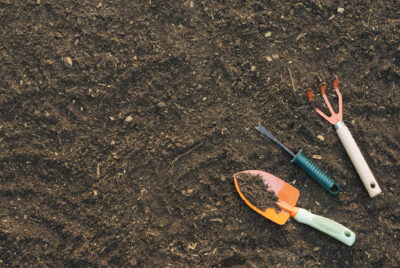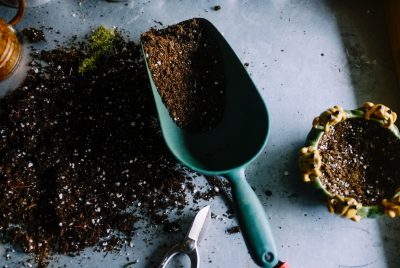All Seasons Gardening: A Year-Round Bounty of Fresh Delights
As an avid gardener, I have discovered the joy and satisfaction of growing fresh produce throughout the year. With all seasons gardening, you can indulge in the pleasure of harvesting your own fruits, vegetables, and herbs regardless of the weather outside. In this article, I will share valuable insights and helpful suggestions on how you can create a thriving garden that provides an abundant supply of food year-round.
Introduction
Gardening is not limited to just one season. With careful planning and the right techniques, you can enjoy a diverse and continuous harvest, even in the colder months. All seasons gardening enables you to cultivate a wide range of crops, experiment with new varieties, and savor the flavors of homegrown goodness throughout the year.
Benefits of All Seasons Gardening
All seasons gardening offers numerous advantages that go beyond the joy of having fresh produce at your fingertips. Here are a few benefits to consider:
1. A Steady Supply of Fresh Food
By embracing all seasons gardening, you can avoid relying solely on grocery stores for your produce. You’ll have a bountiful supply of fresh, nutrient-rich food available whenever you need it. Say goodbye to flavorless, store-bought vegetables and experience the incredible taste of homegrown goodness.
2. Cost Savings
Growing your own food can save you money in the long run. With all seasons gardening, you’ll reduce your grocery bills by producing your favorite fruits, vegetables, and herbs at a fraction of the cost. Plus, you’ll have the satisfaction of knowing exactly where your food comes from and how it’s been grown.
3. Environmental Benefits
All seasons gardening promotes sustainability and reduces your carbon footprint. By growing your own food, you minimize the need for transportation, packaging, and energy-intensive farming practices. It’s a small step towards a greener and more eco-friendly lifestyle.
4. Gardening as a Year-Round Hobby
Engaging in all seasons gardening allows you to enjoy the benefits of gardening as a year-round hobby. It keeps you connected to nature, provides a sense of purpose, and offers a creative outlet for your green thumb. Whether it’s tending to seedlings indoors during winter or harvesting a crisp salad in the height of summer, you’ll find endless fulfillment in nurturing your garden through every season.
Choosing the Right Plants
To achieve a successful all seasons garden, selecting the right plants is crucial. Not all vegetables and herbs thrive in every season, so it’s important to consider their specific requirements. Here are some factors to keep in mind:
1. Understanding Plant Hardiness Zones
Familiarize yourself with your local plant hardiness zone. This information will help you determine which plants are suitable for your area and when to sow or transplant them. A quick search online or a visit to your local gardening center will provide you with the necessary details.
2. Cool-Season vs. Warm-Season Crops
Different plants have varying temperature preferences. Cool-season crops, such as lettuce, spinach, and kale, thrive in cooler temperatures and can tolerate light frosts. Warm-season crops, such as tomatoes, peppers, and cucumbers, prefer higher temperatures and should be planted after the risk of frost has passed.
3. Succession Planting
Implementing succession planting ensures a continuous supply of fresh produce. By staggering your plantings, you can harvest one crop while another is still growing. For example, once you harvest your early spring lettuce, you can replant the area with a summer crop like beans or zucchini.
Jeremy from Umbel Organics shared this great article on succession planting, especially with lettuce!
Maximizing Garden Space
One common challenge in all seasons gardening is maximizing garden space to accommodate a wide variety of crops. Here are some techniques to make the most of your available space:
1. Intensive Gardening
Intensive gardening involves close plant spacing and intercropping. By utilizing raised beds or square foot gardening techniques, you can maximize the yield from each square foot of garden space. This method is particularly useful for small gardens or those with limited space.
2. Vertical Gardening
Vertical gardening is an excellent way to save space and add visual interest to your garden. Grow vining plants such as cucumbers, beans, or tomatoes on trellises, fences, or sturdy stakes. Utilize hanging baskets or wall-mounted planters for herbs, strawberries, or trailing flowers.
3. Container Gardening
If you have a small patio or balcony, container gardening allows you to grow a variety of plants in pots or containers. Choose compact varieties or dwarf varieties of your favorite vegetables and herbs. Containers offer flexibility, allowing you to move plants around to optimize sunlight exposure.
Essential Tools and Equipment
To embark on your all seasons gardening journey, you’ll need a few essential tools and equipment to ensure success. Here’s a list of items to consider:
1. Quality Garden Gloves
Protect your hands from thorns, sharp tools, and rough surfaces with a pair of durable garden gloves. Look for gloves that provide a good grip and allow flexibility for ease of movement.
2. Hand Trowel and Pruners
A hand trowel is a versatile tool for planting, weeding, and digging small holes. Pruners are essential for trimming and shaping plants, removing dead foliage, and harvesting fruits and vegetables.
3. Watering Can or Hose
A reliable watering can or hose is crucial for providing adequate moisture to your plants. Consider investing in a watering wand or a nozzle with adjustable settings for targeted watering.
4. Garden Fork or Spade
A garden fork or spade is essential for turning soil, breaking up clumps, and incorporating amendments. Choose a sturdy and well-crafted tool that can withstand the demands of all seasons gardening.
5. Garden Markers and Labels
Keep track of your plantings with garden markers or labels. This will help you identify different varieties, note planting dates, and track growth progress.
6. Frost Protection Materials
In colder regions, be prepared with frost protection materials such as frost blankets, cloches, or row covers. These will help shield your plants from frost damage and extend the growing season.
Understanding Seasonal Changes
Successful all seasons gardening requires an understanding of the seasonal changes and their impact on plant growth. Let’s explore some key considerations for each season:
1. Spring Gardening Tips
As winter fades away, spring brings new life to the garden. Start by preparing the soil, removing any debris or weeds. Sow cool-season crops like lettuce, radishes, and peas. Protect young seedlings from late frosts by covering them with cloches or row covers.
2. Maintaining Your Garden in Summer
Summer is the time for warmth and abundant growth. Ensure your plants receive adequate water, especially during hot spells. Mulch around plants to conserve moisture and suppress weeds. Monitor for pests and diseases, and take necessary steps to prevent or treat any issues.
3. Fall Gardening Tips and Techniques
As temperatures cool down, take advantage of fall gardening. Plant cool-season crops for a late-season harvest, such as carrots, beets, and cabbage. Extend the growing season by utilizing row covers or cold frames to protect your plants from early frosts.
4. Winter Garden Care
In colder regions, winter gardening focuses on indoor or protected cultivation. Set up a designated area with sufficient light for starting seeds indoors. Grow cold-hardy vegetables such as kale, Swiss chard, or winter greens in unheated greenhouses or cold frames.
Tips for Spring Gardening
Spring is an exciting time for gardeners, as it marks the beginning of the growing season. Here are some tips to kick-start your spring gardening:
- Prepare the soil: Loosen the soil and remove any weeds or debris to create a clean and fertile bed for planting.
- Plan your crops: Determine which cool-season crops you want to grow and make a planting schedule based on your local frost dates.
- Start seeds indoors: For crops that require a longer growing season, start seeds indoors a few weeks before the last frost date. Use seed trays or small pots with a seed-starting mix.
- Direct sow hardy crops: Some crops, such as peas, radishes, and spinach, can be sown directly into the garden as soon as the soil is workable.
- Provide protection: Monitor weather forecasts and protect young seedlings from late frosts by covering them with cloches, row covers, or frost blankets.
Maintaining a garden is a rewarding experience that requires time, effort, and care.





